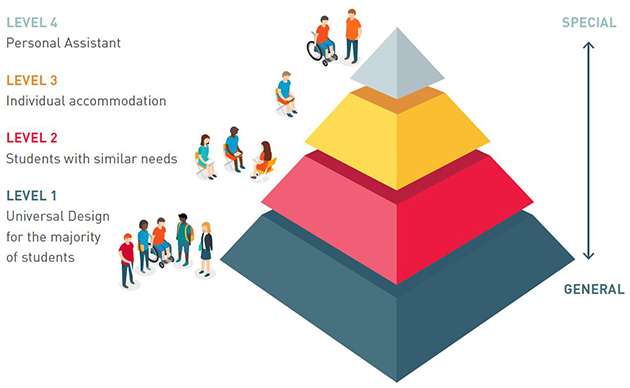Article Reflection:
Rose, David & Hasselbring, Ted & Stahl, Skip & Zabala, Joy. (2005). "Assistive Technology and Universal Design for Learning: Two Sides of the Same Coin Two Roles for Technology" from The Handbook of Special Education Technology Research and Practice.
Linking to the research in this Assistive Technology course has allowed me to gain perspective about the importance of the role Assistive Technology plays in the lives of the people utilizing it to access information and to be able to fully participate in their education. Curriculum outlines being heavily text based and in print form only have been a huge barrier to those people needing this type of material presented digitally or in different formats. Although there have been advances in this, there are still many more hurdles to jump. I didn't realize the copyright laws and policies surrounding publishing companies, etc. would be continuing to have such a huge affect as to how material is presented and curriculum is developed. I think the idea of ensuring that digital forms of text be available simultaneously with print versions of text is imperative for students being able to access material equally. So I think the idea of the 'free market distribution model' would work and to me, seems to be the most logical approach.
I enjoyed reading the article and imagining UDL and Assistive Tech on a continuum and needing one another to be fully effective but that they do exist in their own right and can be complementary to one another. Throughout the past year, we've been hearing"only as special as necessary" when linking up Assistive tech to a user and this resonated with me as I was reading the article.
I enjoyed reading the article and imagining UDL and Assistive Tech on a continuum and needing one another to be fully effective but that they do exist in their own right and can be complementary to one another. Throughout the past year, we've been hearing"only as special as necessary" when linking up Assistive tech to a user and this resonated with me as I was reading the article.
"We believe that advances in one approach prompt advances in the other and that this reciprocity will evolve in ways that will maximize their mutual benefits, making it essential that both approaches are pursued vigorously and distinctively. Through a better understanding and melding of AT and UDL, we believe that the lives of individuals with disabilities will ultimately be improved." (Rose, et. al 2005)
I really think the pyramid picture below shows the idea of "Only as special as necessary" clearly and that in the end, if things are designed universally from the onset, then more may and can benefit from those designs.

UDL in a Nutshell:
"Its purpose is to identify potential barriers to learning in a curriculum or classroom and to reduce such barriers through better initial designs, designs with the inherent flexibility." (Rose, et. al 2005)
"While either universally designed materials or AT in isolation can be helpful, it is at the intersection of the two that information access, and, ultimately learning, becomes most individualized and appropriate." (Rose, et. al 2005)




No comments:
Post a Comment